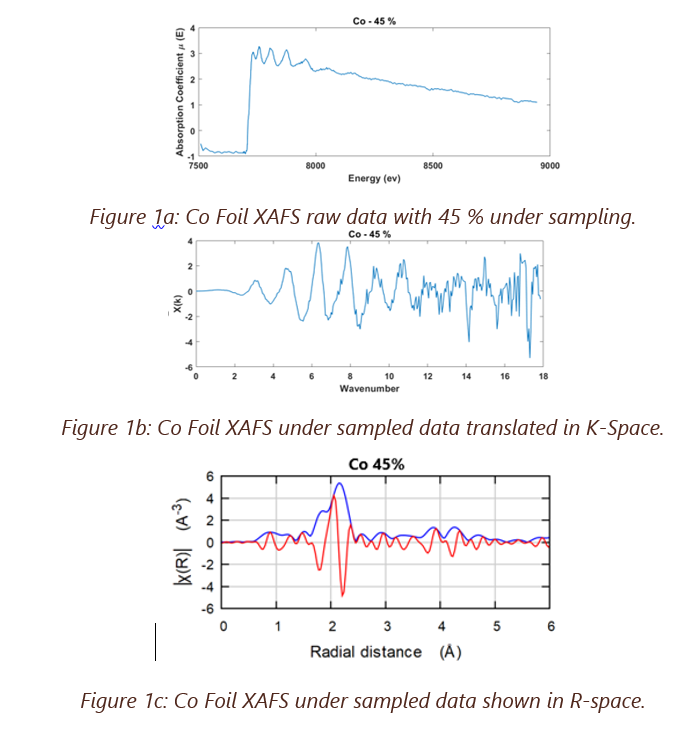Compressed Sensing for Rapid Signal Retrieval in X-ray Absorption Spectroscopy
X-ray Absorption Fine-Structure Spectroscopy (XAFS) which is a powerful analytical technique, that works with almost any sample matrix, for obtaining elemental and chemical information in many fields such as biosciences, material sciences, catalysis and physical chemistry. XAFS utilizes a large bandwidth radiation that is scanned sequentially to capture the entire spectrum. The entire scanning of certain samples can take relatively long times. High brightness, which is essential for enough sensitivity, can be destructive for certain samples over time. Additionally, time resolved XAFS needs complex optical setups and fast signal processing techniques resulting in a data deluge. These source features are obtained at synchrotron beamlines. Ideally, one would like to have a rapid acquisition of the entire spectrum, i.e. faster than the chemical reaction being studied. Furthermore, the source should operate at below the sample damage flux, without sacrificing information and the required resolution. Advantageously, this method should be available in each laboratory. The aim of this work is to tackle this challenge and enable XAFS on a tabletop. To achieve the target, first step is the development of a tabletop X-ray laser source and the second step is the utilization of unique data collection methods to compensate for the limitations of the source. A compact terawatt chirped pulse amplification laser has been developed for generating X-rays in the lab, based on the principle of Laser produced plasma, where a high energy laser pulse is incident on a solid target to achieve ionization in a Ne-like or Ni-like stable ground configuration; enabling the emission of bright X-rays on a scale of nanosecond to picosecond time duration. For bypassing the limit of sequential scanning, a compressive data collection method is realized. Compressed Sensing (CS) is a well-known in signal processing technique used to acquire and reconstruct under-sampled data sets without losing any important information about the signal. Taking advantage of the sparsity of the spectral signal in a fixed basis and when sampled randomly, the XAFS data acquisition can be dynamic. Aided by convex optimization solvers, faster and reliable data acquisition is possible with competent data reconstruction. A case study of a Co Foil is presented; showing proof of concept that XAFS raw data can be under sampled, reconstructed and translated well into K-space and R-space with an error of less than 1% and a compression factor of more than two. Reliable data about the edges, oxidation states, atomic distances, and structure are extracted with post-processing.
